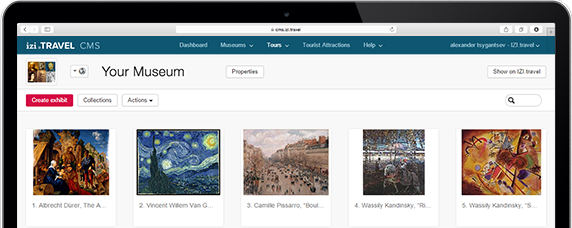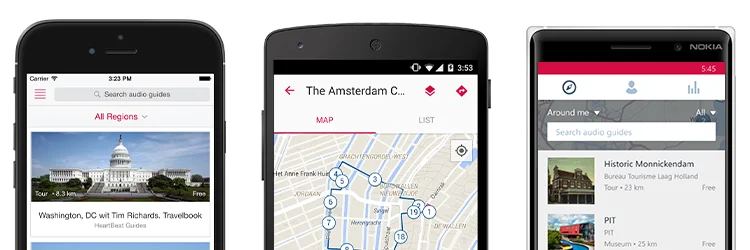Museo IMPERIITURO TAMO Museum, Ravenna
- Download the applinks
- iOS
- Android
- Windows Phone
Información del museo
Acerca del museo
Renovatio imperii
Ravenna in Ottonian Europe
Renovatio imperii was a utopian ideal strongly advocated by Charlemagne, who aimed to restore ancient Roman imperial authority on Christian foundations.
This educational display focuses on a period falling between the Carolingian and Romanesque eras, a historical and artistic epoch that is not very familiar to the general public. We identify these centuries with the Ottonian dynasty, that is, with the German emperors of the House of Saxony who ruled over the Holy Roman Empire from 962 to 1024. The geographical action space we explore here extended from Italy – Rome, Ravenna, Milan, Pavia… – to Europe, then, like now, striving to bring together its different identities and make them coexist. Italy offered sovereigns, archbishops and simple pilgrims arriving from the north to visit it an extremely rich artistic and symbolic heritage which formed a common foundation on which different national and cultural realities were built.
At the Tamo Museum, a story of art based on images narrates Charlemagne’s and the Ottonians’ relationship with Italy and its ancient imperial past.
At the Biblioteca Classense, the engravings and etchings, texts and illustrations of books, documents and cartoonists, describe the role played in this story by Ravenna and important figures of the Ottonian court.
The educational display at the Tamo is divided into three sections.
In the first section, the theme of Renovatio imperii is addressed starting from Charlemagne’s initiatives to create Aachen, his Roma secunda. The emperor’s ties with Italy, from which he took works representing his imperial ideal to Germany, were a source of inspiration for the emperors who succeeded him, the Ottonians in particular.
The second section is dedicated to the important role Italy had for Otto the Great and his wife Adelaide, Otto II and his Byzantine wife Theophano and their son Otto III, who had a short but fascinating life. Besides Rome, the capital of Christianity and the imperial ideal, and Pavia, the actual capital of the kingdom of Italy, Milan and Ravenna were their points of reference. As of 966, when Otto the Great returned Ravenna and the Exarchate to the pope, who in turn handed them over to the empress Adelaide, Ravenna again became one of the capitals of the kingdom of Italy and was one of the places of residence preferred by the Ottonians.
The last section spotlights the original style of Ottonian artistic production, characterized by interwoven elements of the Roman, Constantinoplian and Carolingian imperial ideas. The works featured show some typical ways in which objects of antiquity were reused: their use for political ends, the passage from reuse to imitation, coexistence of classical and Christian iconographies, taste for assembling fragments originating from different times.
Credits
General coordination
Maria Pia Guermandi
Scientific curatorship
Silvia Urbini, Claudia Giuliani, Elisabetta Stamboulis
Organization and technical secretariat
Manuela Pereira
Corporate identity
Aerbiz s.r.l. Roma
Administrative coordination
Lorenzo Zilli
Press office coordination
Valeria Cicala
Web site, social and multimedia
Aerbiz s.r.l. Roma, Manuela Pereira, Maria Elena Tosi
Translations
Michelle Pedretti, Ivan Orsini, Valentina Rossi
Photos
Andrea Scardova
Sezione TAMO
Curated by
Silvia Urbini
Texts
Silvia Urbini, Maria Pia Guermandi, Andrea Augenti
Direction
Sergio Fioravanti
Organization
Fabrizio Corbara
Exhibition design
Paolo Bolzani
Budget
Lisa Tasselli
Press Office
Raffaella Branzi Maltoni
Communication and promotion
Francesca Lizza
Educational activities
Laboratori didattici di RavennAntica
Reception services
Fondazione RavennAntica
Exhibition set-up
Contemporanea Tecnologie coordinate
Audioguide Credits:
Management
Maria Pia Guermandi, Remo Bitelli
Voices
Antonella Salvi (IBC)
COOPIT - Cooperativa Interpreti e Traduttori (Bologna)
Texts
Texts are extracted from Catalogue, informative material is available at TAMO Museum and from the exhibition website
Planifica tu visita


- 2, Via Nicolò Rondinelli, San Rocco, Rávena, Ravenna, Emilia-Romaña, 48121, Italia
- http://www.imperiituro.eu/
Objetos
Objetos mostrados con sonido
-
CEC – Cradles of European Culture
-
CHARLEMAGNE, ITALY AND RAVENNA
-
Palatine Chapel at Aachen
-
She-bear and Pine cone
-
Sarcophagus of Proserpina
-
Pulpit of Emperor Henry II
-
THE OTTONIANS, ITALY AND RAVENNA
-
Well of Otto III
-
Ivory panel with the Redeemer, Otto II, Theophano and Otto III
-
Tympanum of the ciborium of Basilica of Saint Ambrose
-
Complex of the Basilica of San Severo, Classe
-
THE ROLE OF THE CLASSICAL TRADITION AND THE DISSEMINATION OF MODELS IN THE OTTONIAN PERIOD
-
Lothair Cross
-
Herimann Cross
-
Diptych of Rambona
-
Column-paschal candlestick
-
Equestrian portrait of Charlemagne or Charles the Bald
-
"Sciamito" of Saint Julian
-
Altar-reliquary of St. Andrew's sandal
-
Drawing of the reliquary of Einhard
Reseñas
Descargue la app gratuita de izi.TRAVEL
¡Cree sus propias audioguías!
La utilización del sistema y la app de guía para móvil es gratuita


